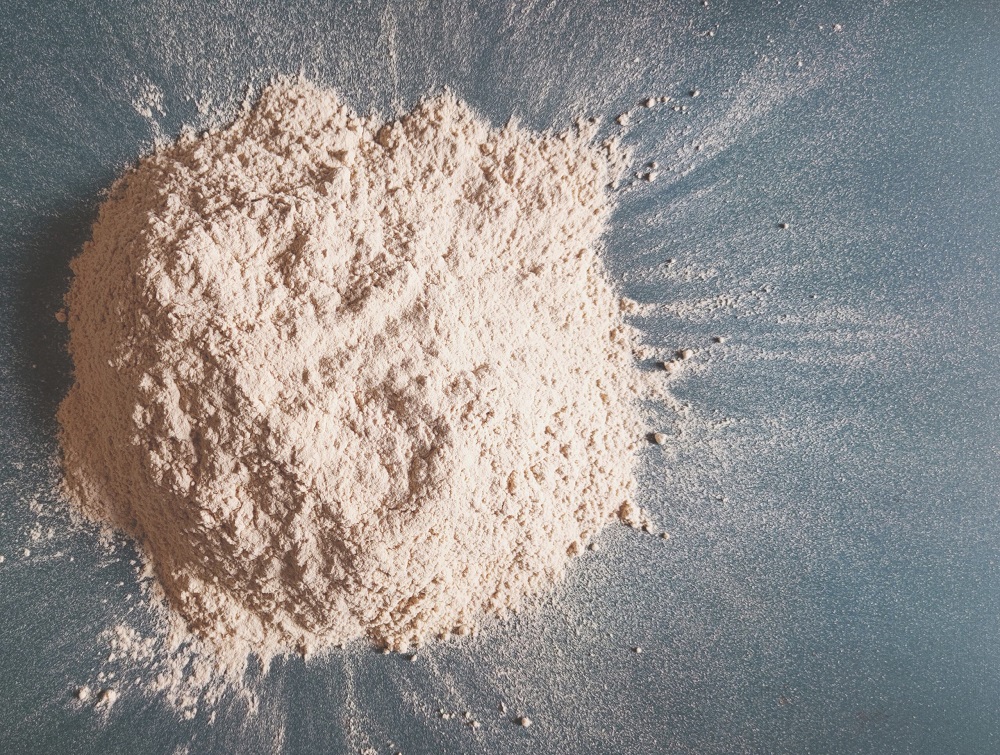Silkworm is a caterpillar that eats leaves, and would have been harmful to the crops and eradicated had people not discovered that it produces delicate silk.
Raising silkworms
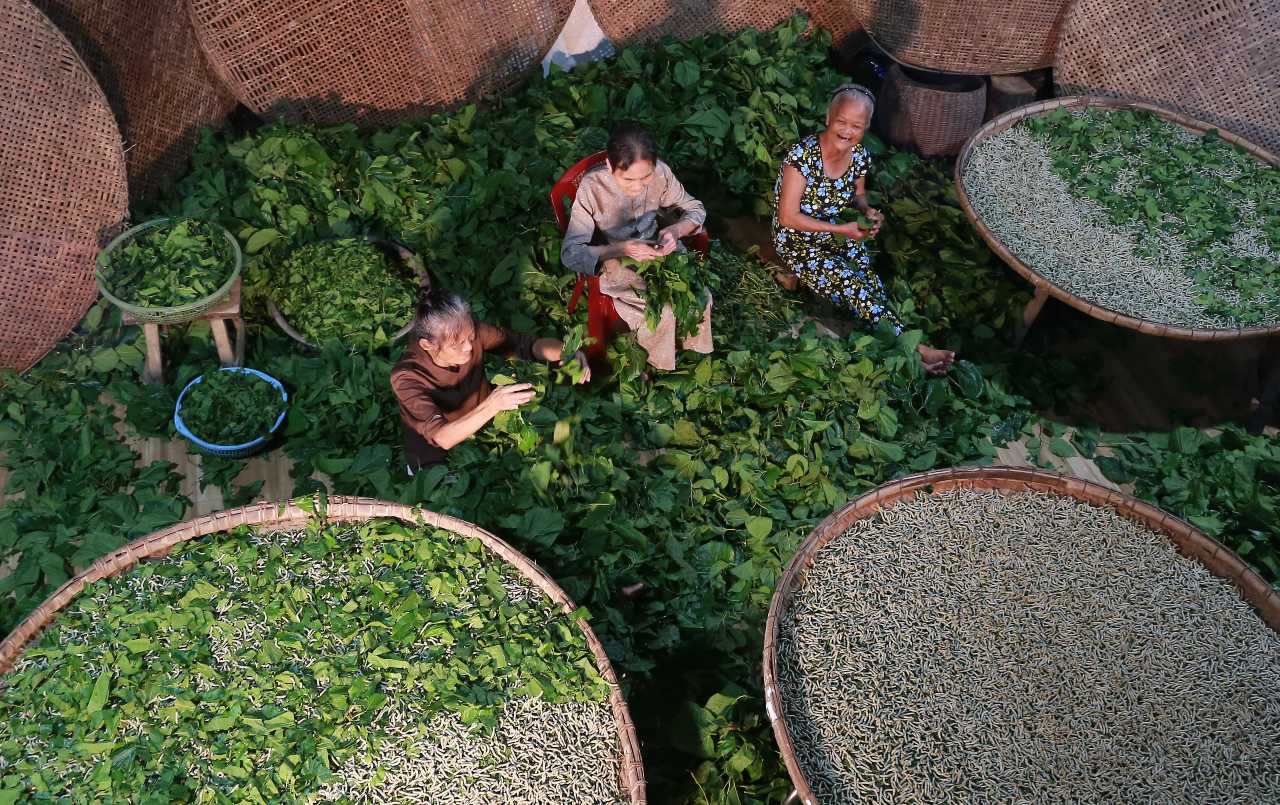
Silkworms prefer mild weather, so it is best to breed them in spring and autumn. Their life-cycle is about 23-25 days, divided into 5 phases, through 4 molts. Larvae eat continuously, and their food is white mulberry. White mulberries are cultivated on fertile alluvial fields and cut twice a year in order for them to grow strong and fast, to supply sufficient leaves for sericulture. Leaves are picked either young or later in accordance with the worms’ life phases. Mulberries grow back fast, only within a week after all leaves are cut off. It has to be clean leaves that are fed to the silkworms, without washing with water. They eat continuously for 4 days and then rest for 2. After that, they will molt. Their last phase as larvae is the time when they eat the most to accumulate nutrients to prepare for releasing silk. After about 3 weeks, they reach their maximum size and stop eating. They are then lustrous, translucent, and their bodies are filled with a transparent fluid, at which time they tend to rise and find a place to build their cocoons.
Releasing silk and building cocoons
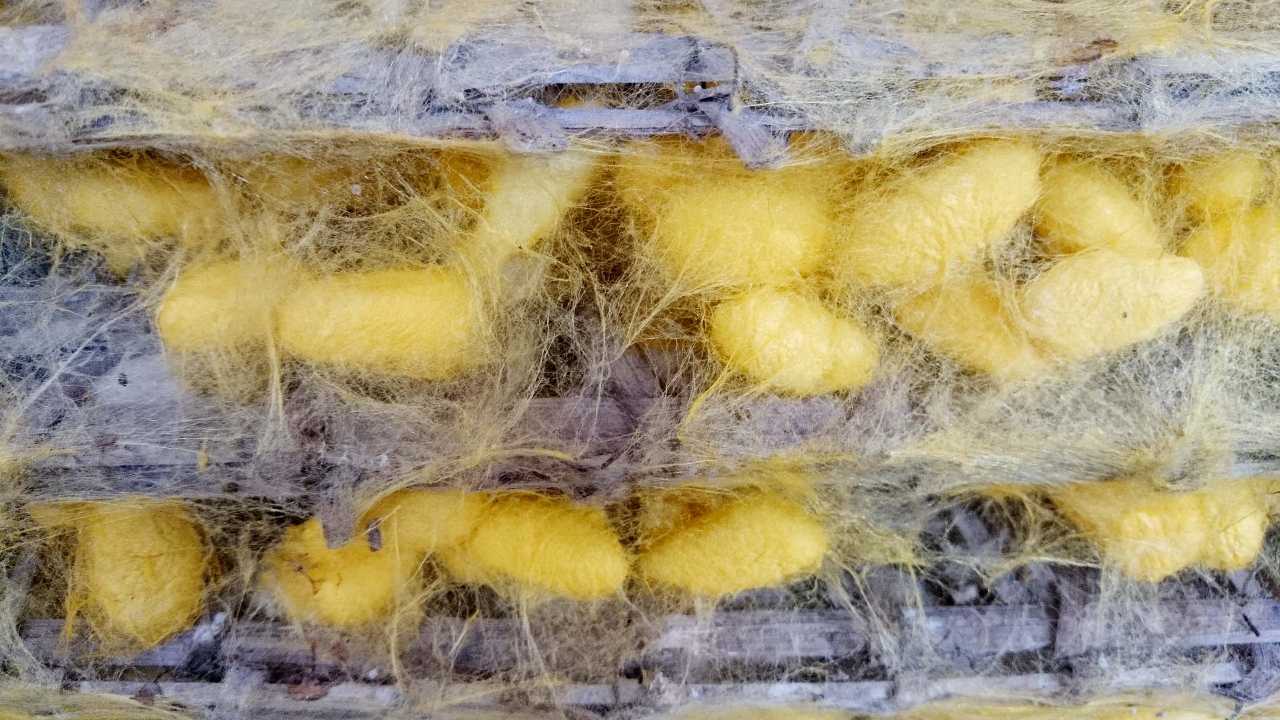
In domesticated sericulture, silkworms will be picked and put on a rack called “né” to release silk. It is a frame made of jute, having 5 layers, and divided into rectangular compartments. Silkworms will be releasing silk and forming their cocoons from the outside inwards. In a period of 4 days, they will continuously spin in an 8-shape for around 300 thousand times, releasing nearly 1 km of silk surrounding their bodies. The silk released is a type of translucent and viscous protein produced by the silkworms’ salivary glands that hardens when exposed to the air to form strings of silk. Another liquid they release is sericin, acting as glue to connect thin silk fibers into strings. When they finish releasing silk, silkworms lie motionless in their cocoons and turn into pupae, when they can be taken to the next step of reeling.
Silk reeling
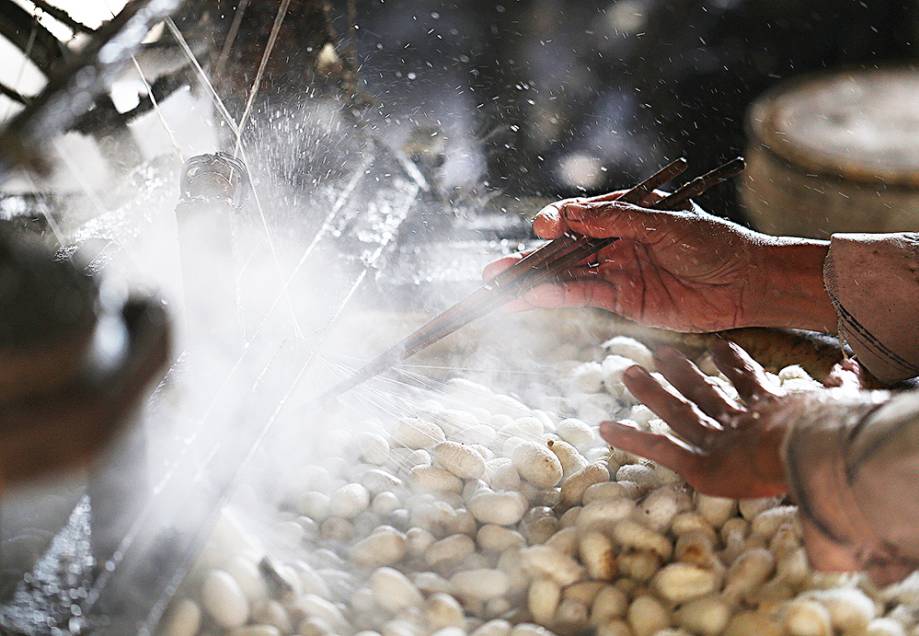
Silk reeling is the step of pulling silk strings from the cocoons. It has to be done in about 5 days, lest pupae turn into moths and break the cocoon to emerge, destroying the silk. First, they are boiled to melt the sericin and soften the cocoons and remove the outer coat so as to find the starting point to unravel them. Silk threads are spun onto bobbins and processed to the reel placed above the boiling water pot and then parched in the sun.
Silk is a durable natural fiber, similar to wool and human hair. Scientists have discovered that its cross-section is triangular with rounded corners so light can be reflected in many angles, making silk appear shiny.
Weaving
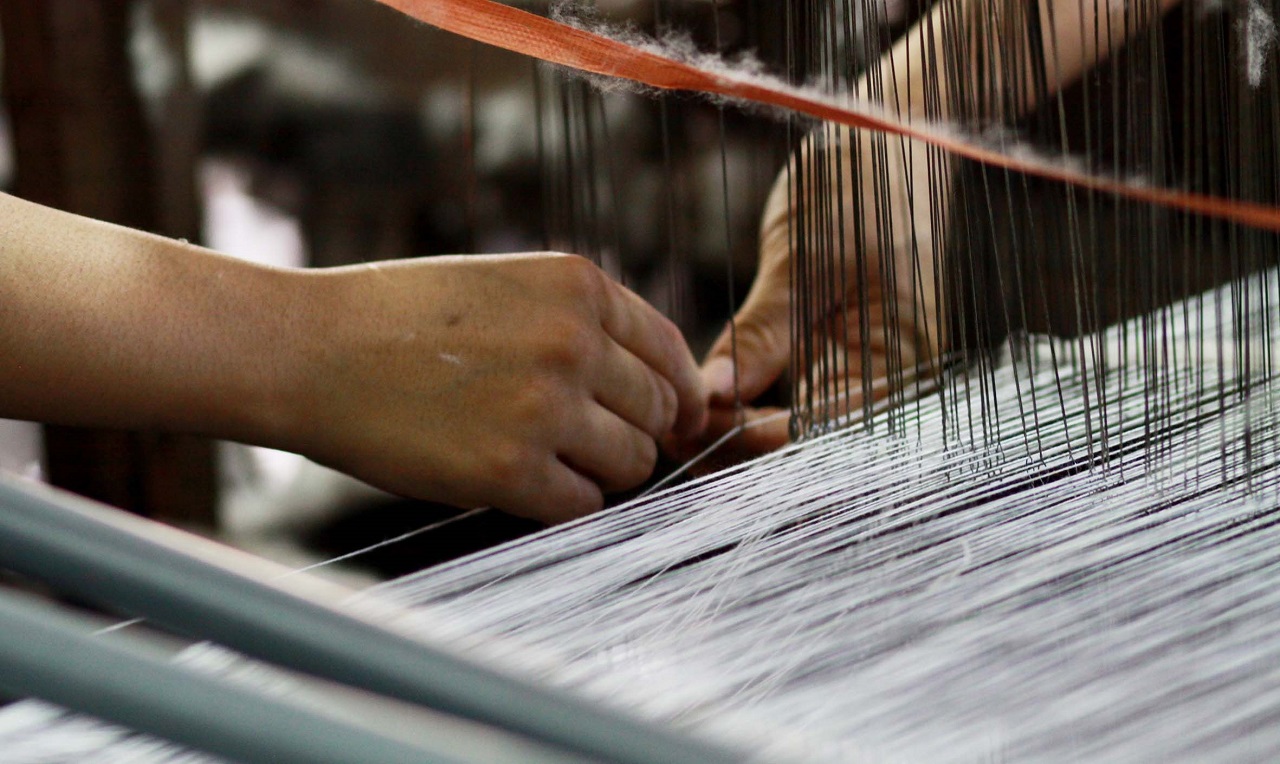
Depending on the silk threads’ quality and the method of spinning, silk will come out with different quality and the number of threads in weaving will decide silk’s thickness, creating a wide range of silk fabrics, that can be thin or thick, glossy, soft or rough. Traditional silk weaving craft of Vietnam makes combination of cross threads to produce plenty of silk types.
Dyeing
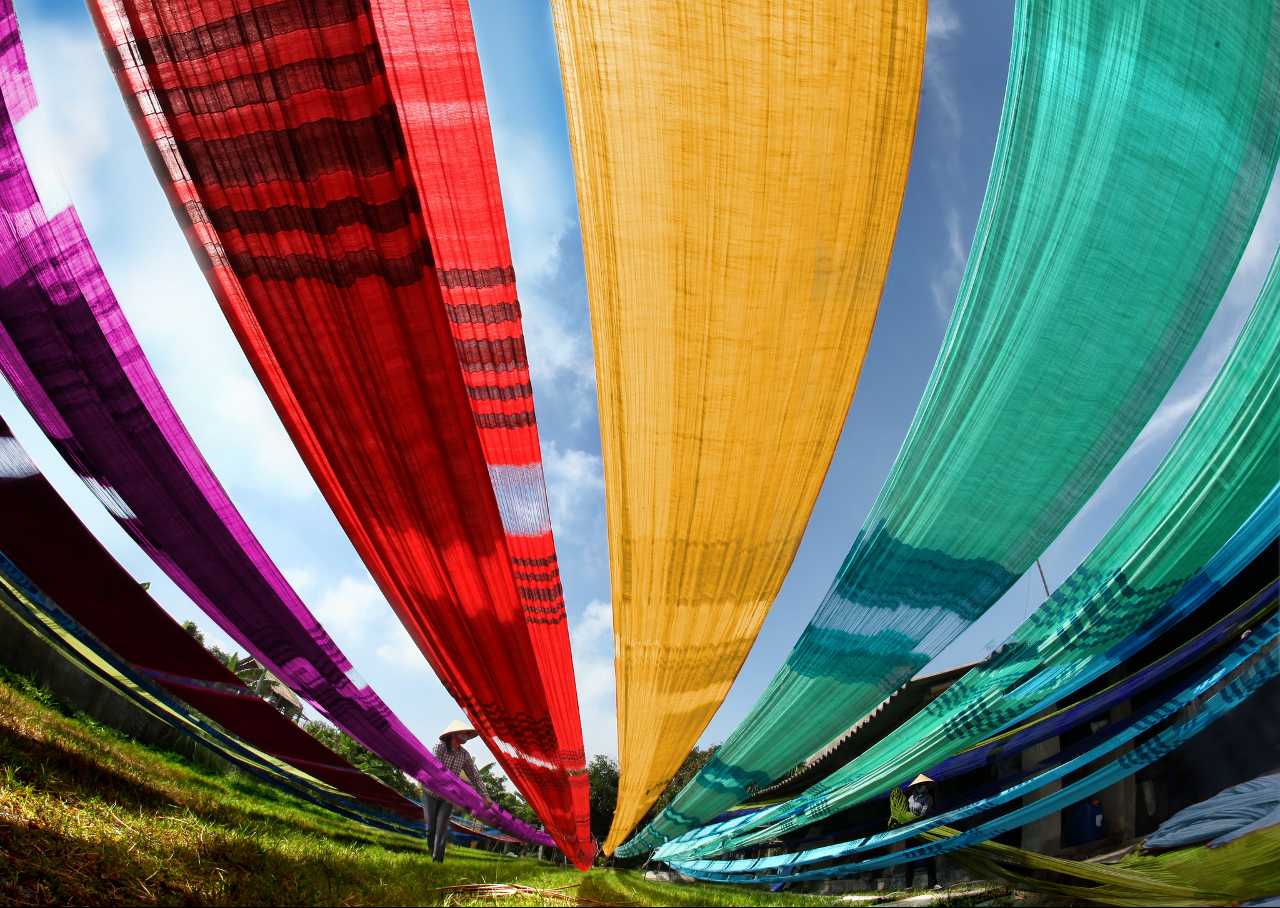
Newly woven silk pads are called raw silk, with the ivory white color of silk as they are released, and a little rough due to the remaining sericin. They will become colorful after being dyed. First, they are soaked in hot water to clear out all the glue left. Traditionally, as done in the silk villages of Van Phuc, Nha Xa, or Ma Chau, silk is dyed with natural ingredients such as tree barks, leaves and kinds of roots, etc. Nowadays, modern techniques with industrial dyeing substances bring about various new vibrant colors and the silk threads can be dyed before they are woven, generating plethora of colors and unique patterns.



